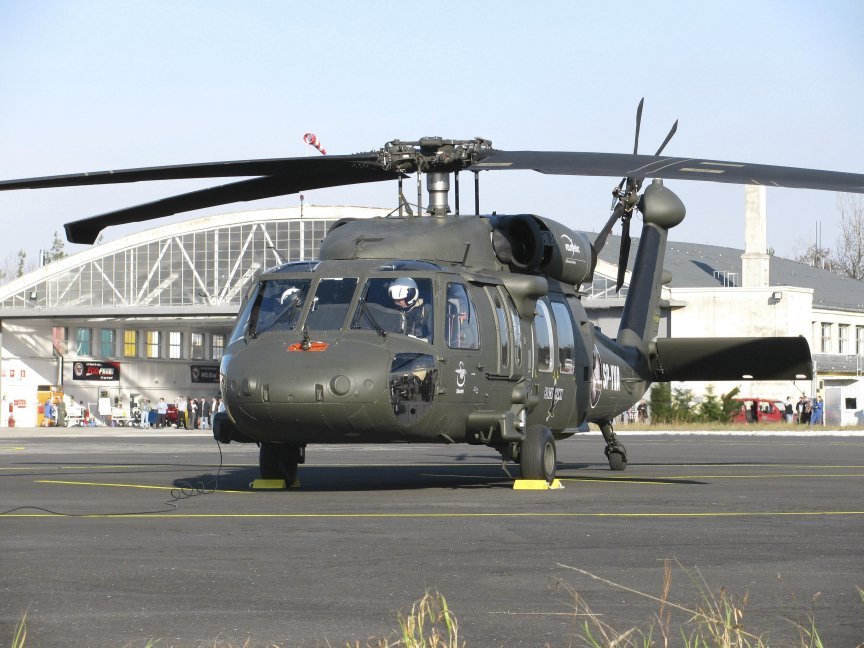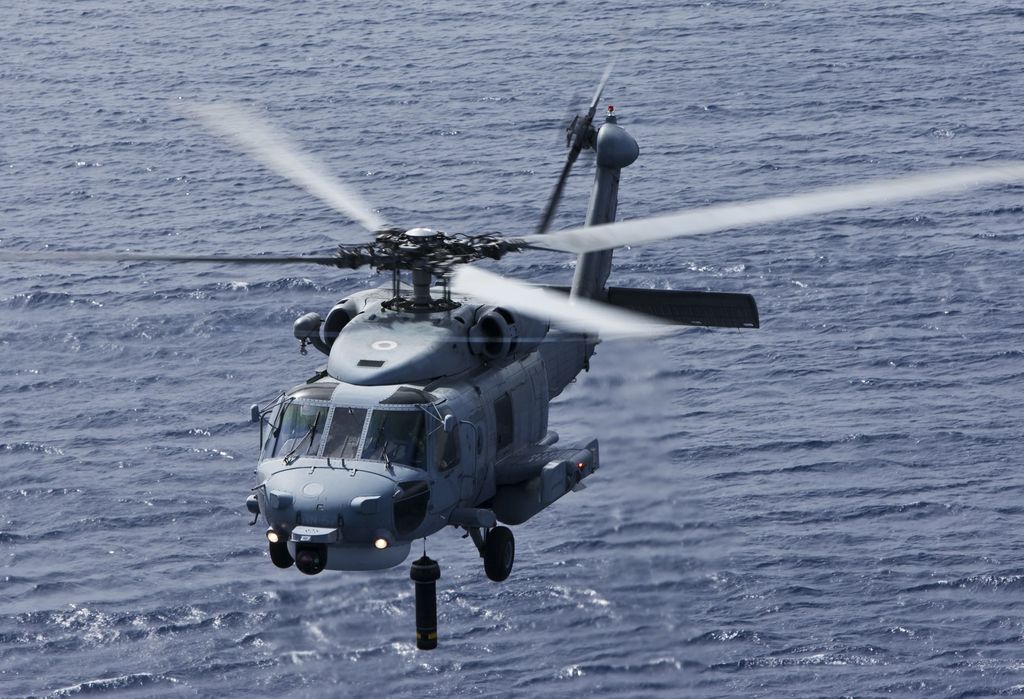Why the Sikorsky S 70 is the Preferred Choice for Modern Helicopter Missions
Why the Sikorsky S 70 is the Preferred Choice for Modern Helicopter Missions
Blog Article
Rotary-Wing Aircraft Offering Superior Durability and Precision Design
In the world of aeronautics, rotary-wing airplane have long been recognized for their one-of-a-kind capacities in different operational atmospheres. From army missions to noncombatant applications, the advancement of rotary-wing technology has led the way for devices that supply unequaled resilience and accuracy design. With developments in products and construction methods, combined with sophisticated trip control systems, these airplanes have become vital devices for tasks that require both toughness and precision. As we check out the detailed equilibrium between advancement and integrity in rotary-wing airplane, it comes to be noticeable that the convergence of cutting-edge modern technology and tested design principles has actually set a new standard for performance and efficiency in the aerospace industry.
Advancement of Rotary-Wing Technology
Throughout the history of aviation, the evolution of rotary-wing technology has actually been a testimony to continual innovation and improvement in aeronautical engineering. From the early days of vertical flight with basic designs to the innovative helicopters and other rotary-wing aircraft these days, the development in this field has actually been exceptional.
In the very early 1900s, pioneers like Igor Sikorsky and Juan de la Cierva made considerable strides in rotary-wing innovation. Sikorsky's VS-300 helicopter, initial flown in 1939, noted a zero hour in the growth of functional rotary-wing aircraft. This success led the way for further improvements in vertical trip capacities.

Today, rotary-wing airplane play important functions in different markets, including army operations, emergency clinical services, legislation enforcement, and commercial transportation. The development of rotary-wing innovation proceeds to push the limits of what is possible in vertical trip, making sure that these aircraft stay important assets in the aeronautics industry.
Materials and Building Innovations
Demonstrating a blend of advanced materials and accurate building strategies, rotary-wing aircraft have undergone significant innovations in sturdiness and efficiency. One of the vital innovations in materials utilized for rotary-wing aircraft is the raising application of composite products.
Additionally, the combination of sophisticated finishes and surface area treatments has actually played a critical role in boosting the sturdiness of rotary-wing airplane. These finishes give security versus rust, abrasion, and extreme weather, prolonging the lifespan of the aircraft and decreasing maintenance requirements.
In regards to building and construction innovations, additive production, also understood as 3D printing, has actually changed the manufacturing of complicated parts for rotary-wing aircraft. This innovation permits for quick prototyping and personalization, leading to faster growth cycles and decreased expenses. Generally, the constant advancement of materials and construction techniques is driving the abilities and performance of rotary-wing aircraft to new heights.
Accuracy Trip Control Systems

The combination of GPS technology additionally boosts the precision and integrity of these systems, enabling precise navigating, waypoint monitoring, and automated flight control. sikorsky s 70. This level of accuracy not just enhances the safety of rotary-wing operations however additionally boosts total operational performance and objective effectiveness
Additionally, the continual developments in expert system and device learning have facilitated the growth of self-governing flight abilities within Precision Trip Control Solution. This makes it possible for rotary-wing airplane to perform complex missions with exceptional precision and consistency, making them vital possessions in a wide variety of applications, including military procedures, search and rescue goals, and airborne digital photography.
Resilience in Challenging Environments
Popular operational setups, rotary-wing aircraft show exceptional durability and toughness, making certain ideal efficiency under challenging ecological conditions. These airplanes are created to withstand a vast array of environmental factors, consisting of extreme temperatures, high winds, and rough surface, browse around here making them appropriate for various goals in diverse landscapes.
One vital variable adding to the toughness of rotary-wing aircraft is their rugged building and construction. These airplanes are built using high-quality products and advanced design techniques to enhance their architectural stability Click This Link and reliability. Additionally, elements such as rotor blades, engine systems, and landing gear are carefully developed to hold up against the strains and stress and anxieties experienced during operations in difficult environments.
Furthermore, rotary-wing aircraft are geared up with sophisticated onboard systems that monitor performance metrics in real-time, permitting aggressive upkeep and early discovery of potential problems - sikorsky s 70. This proactive approach assists protect against unforeseen failings and makes sure the ongoing airworthiness of the aircraft popular functional setups. Generally, the longevity of rotary-wing airplane in challenging settings is a testament to their remarkable design and layout, making them crucial possessions for different mission-critical operations
Upkeep and Dependability Requirements
The adherence to rigid upkeep and integrity requirements is vital in guaranteeing the ideal performance and safety of rotary-wing airplane. Normal maintenance checks, conducted by licensed service technicians, are vital to determine and deal with any kind of prospective problems before they endanger the airplane's functionality. These checks include a detailed examination of all important elements, including the engine, blades system, avionics, and hydraulic systems, to ensure that they you could try this out remain in prime working problem.
Moreover, adherence to scheduled upkeep intervals in conformity with supplier standards is important for upholding the aircraft's reliability. This positive strategy aids protect against unforeseen malfunctions and ensures that the airplane remains airworthy for its intended missions. Additionally, the implementation of durable dependability criteria, such as regular element screening and replacement based upon fixed lifecycles, further enhances the aircraft's dependability.
Conclusion

Finally, the improvements in rotary-wing airplane technology have actually led to superior sturdiness and accuracy design. With ingenious products and building techniques, along with accuracy flight control systems, these aircraft can operate in difficult atmospheres with enhanced integrity. The upkeep and dependability standards ensure that these rotary-wing aircraft continue to perform at their best, making them essential assets for numerous industries.
Showing a combination of innovative materials and accurate building and construction strategies, rotary-wing airplane have undergone significant innovations in longevity and efficiency. One of the key advancements in materials made use of for rotary-wing airplane is the enhancing application of composite products.With precise attention to detail and advanced technological integration, rotary-wing airplane have actually welcomed Precision Trip Control Systems as a keystone of their functional quality. On the whole, the longevity of rotary-wing airplane in challenging atmospheres is a testament to their superior design and design, making them crucial possessions for various mission-critical procedures.
In final thought, the innovations in rotary-wing airplane innovation have actually led to superior sturdiness and accuracy engineering.
Report this page